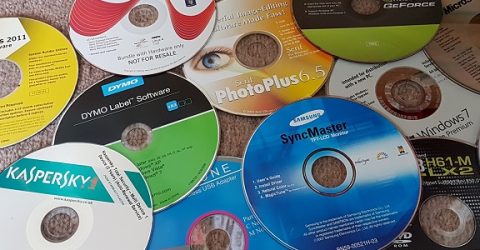Will we ever have a universal file storage platform?

Since the dawn of home computing forty years ago, there have always been competing and incompatible file storage systems.
The Amstrad CPC loaded files from audio cassette tapes, while the Sinclair QL pioneered the short-lived Microdrive.
In the early 1990s, home computers including the Commodore Amiga adopted 3.5-inch floppy discs – themselves a descendant of the larger 5.25-inch floppy disc used in the 1980s.
By the Millennium, computer storage ranged from 100MB Zip drives to C-drive hard discs and CD rewriters.
Then came the growth in USB sticks, as advances in solid-state storage technology enabled data key capacities to expand from megabytes to terabytes.
Today, the default file storage medium is the cloud – huge servers in unbranded overseas data centres, where our files and folders are guarded by people we’ll never meet.
But will we ever have a universal file storage platform?
Formatting follies
The challenge of establishing a universal file storage platform has historically been compounded by short-termism and stubbornness.
In the 1990s, Brother manufactured a range of electronic typewriters, whose document files could be saved on standard 3.5-inch floppy discs.
Unfortunately, these typewriters formatted the discs in a proprietary manner which subsequently prevented any non-Brother device accessing them.
When Windows 95 led to an explosion in home PC usage, the electronic typewriter fell out of favour.
Brother-formatted discs were unreadable by any other machine, meaning irreplaceable contents were often lost forever.
Similar incompatibility between PC and Mac storage devices is legendary, while more recently, Android and iOS files can only be viewed by the ‘right’ hardware and OS.
Standard bearers
Perhaps surprisingly, the internet has provided a basis for consensus and collaboration in many related areas.
A number of web standards have been established by non-profit committees and international organisations, including global templates for HTML code and streaming media file types.
Any modern device ought to be able to open a JPEG, named after the Joint Photographic Experts Group that created this specific file type.
This collaboration between firms including IBM, Mitsubishi and Canon established a method of encoding images which has now been in use for almost three decades.
The JPEG stands as a shining example of how file storage can be standardised and made universally accessible.
It’s entirely possible that a similar accord could one day be reached for universal file storage, ensuring every device can read and write data in the same way.
This would probably involve the cloud, given the emergence of the Internet of Things and our gradual shift away from device storage towards web-based access.
One file storage format to rule them all would be highly beneficial, and it’s entirely achievable considering all digital data is essentially binary – on or off.
However, the cloud storage industry remains too new and too competitive (Dropbox, Google Drive, OneDrive, etc) for a universal standard to be likely any time soon.






